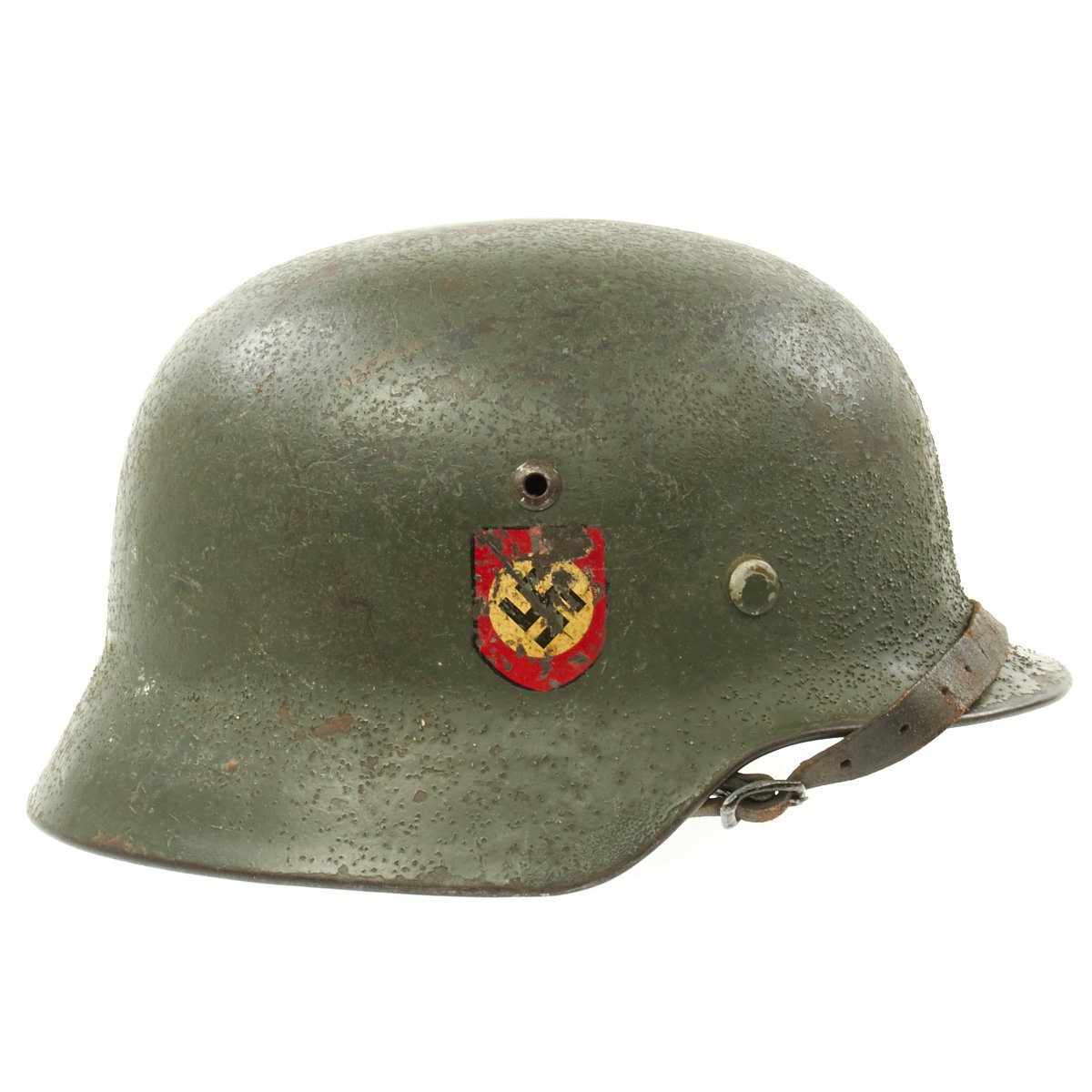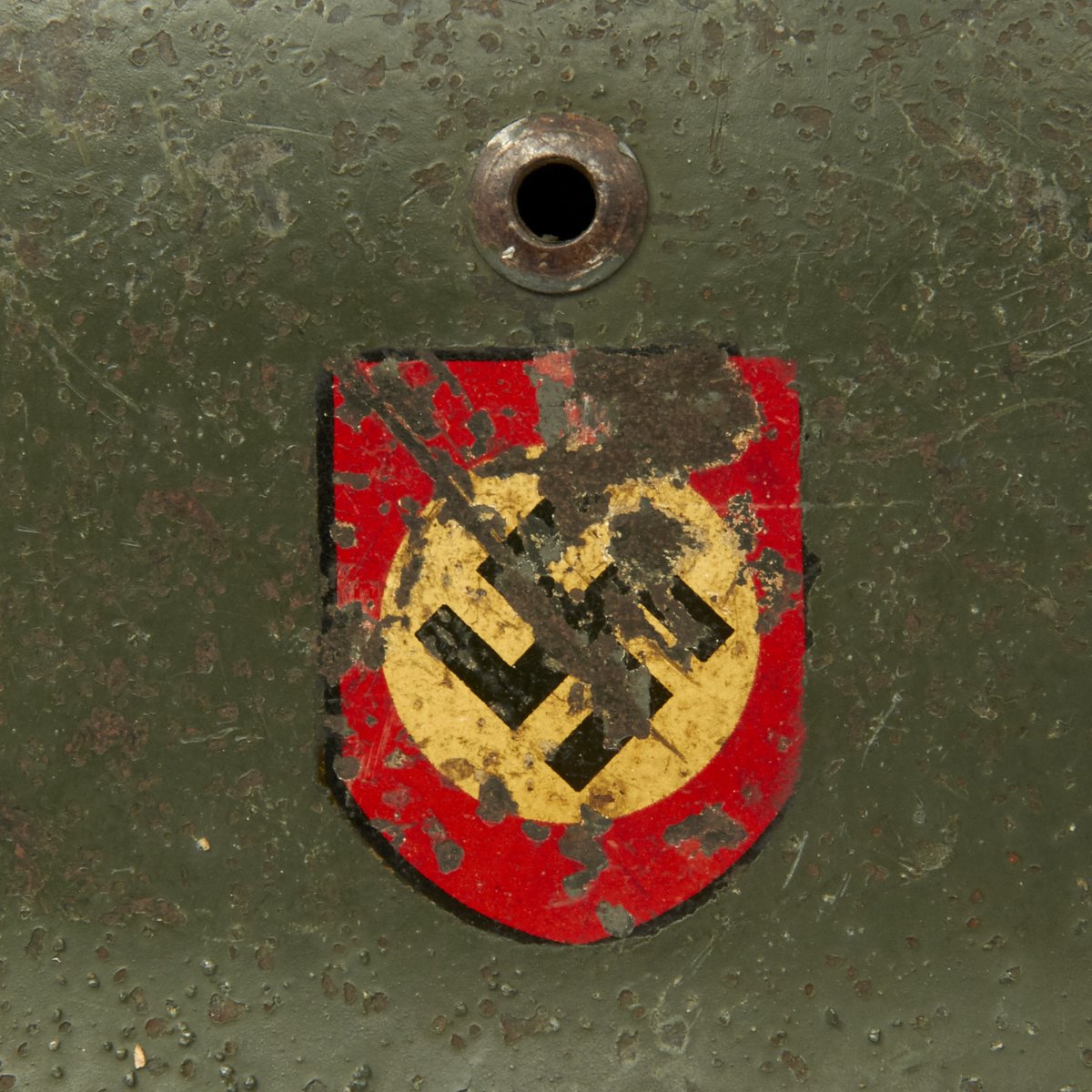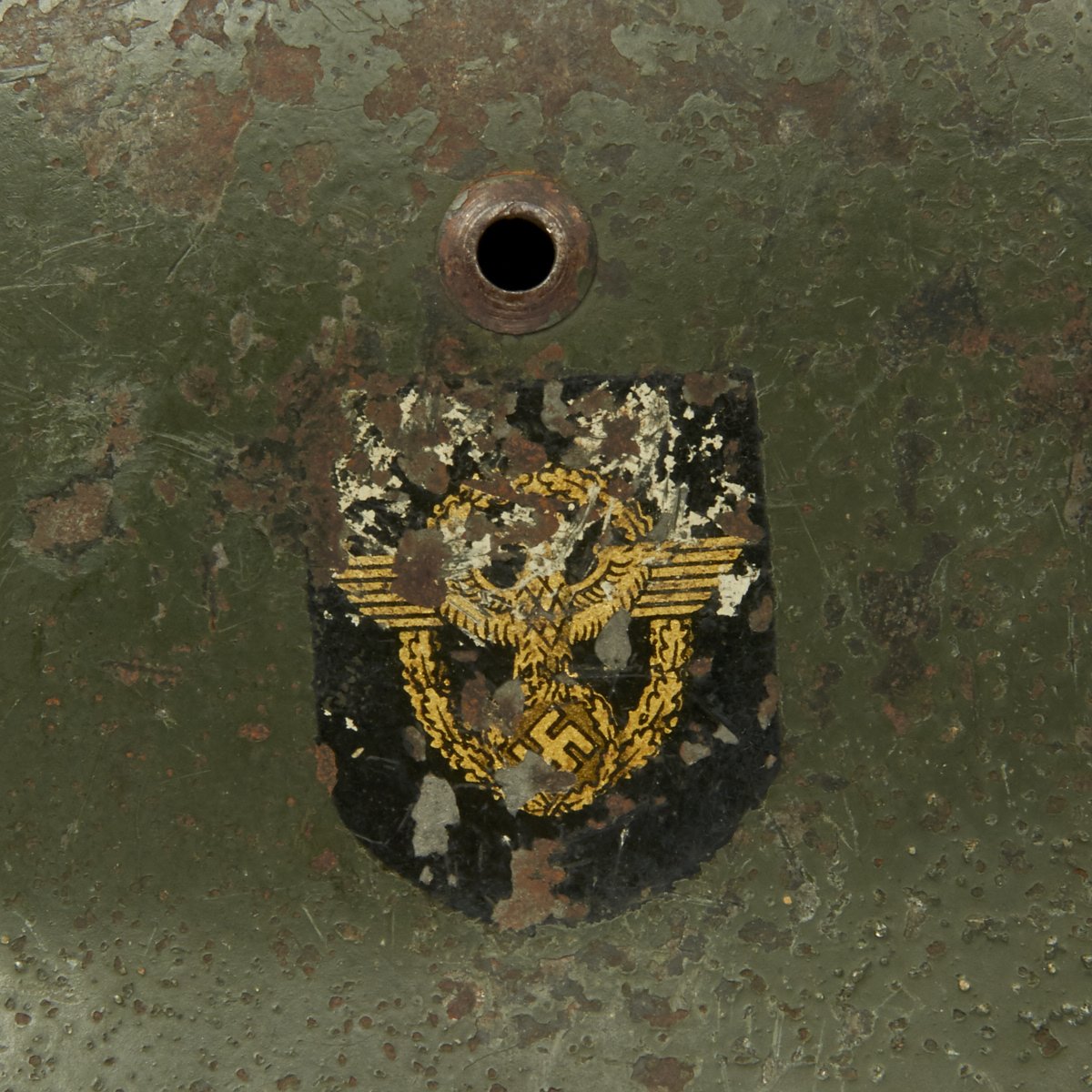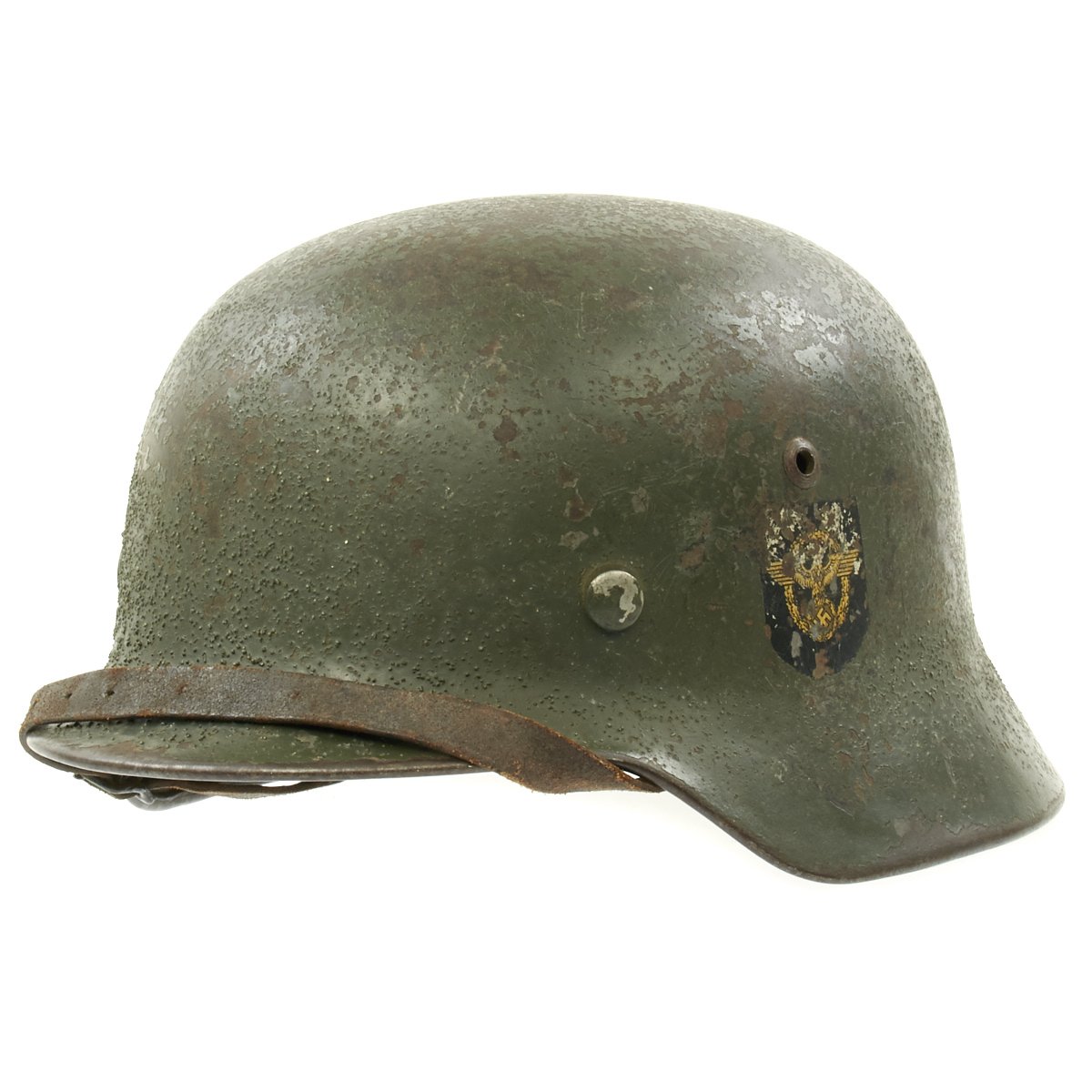Original German WWII M35 Double Decal Police Combat Helmet – Stamped ET66 Original Items
$ 1.095,00 $ 273,75
Original Item: Only One Available. This fantastic double decal Police helmet is a great example of a prewar M35 helmet that was used in WWII. Polizei helmets like this were used by civil police as well as by paramilitary police forces who were deployed as combatants during the war. This example still retains its original greenish-gray paint and two decals. Both of the original decals remain intact. The Polizei eagle decal has some assorted scratches, and the Party shield decal has some chips and also crazing from age. They are about 85 percent intact. Inside, the helmet is stamped with the lot number 4769 and ET66 indicating a size 66 helmet made by Eisenhüttenwerk in Thale. The size 59cm liner is intact the leather still supple and a light coffee shade. It has a reinforced original liner band, as one would expect to see on this. The chinstrap is present and complete. There is no doubt this helmet was worn by a member of the German Polizei during WWII. It’s an attractive, representative example of a desirable double decal police helmet, that displays very well.
When the German Army first marched into war in 1914 it went to the front lines wearing the traditional “Picklehaube” helmets. The war soon developed to necessitate the need for an improved headgear to protect the wearer. The German Army developed the M16 helmet in 1915 and began issuing it in mass quantity to its fighting troops in 1916. The M16 underwent changes to bring about the next model, the M18. Both the M16 and M18 saw use by the German Army during WW1, as well as the interwar years by the Reichswehr and Freikorps. In 1931, a new liner system was developed. The M16 and M18 helmets were in mass supply right up to the time the NSDAP Party took control of the German government. During Adolf AH’s rearming of the German military in the early 1930’s, the M16 and M18 helmets saw extensive refitting with the newer liner system, fresh paint, and the addition of a centralized decal system for the newly formed Wehrmacht’s respective branches. Decals were generally placed on each side of the helmet, one side being the branch and the other the national colors shield or party shield. In 1935, the M35 helmet was introduced. This new design was lighter and more streamlined than the older style helmets and is what the world now recognizes as the iconic helmet of the German Military. M35 helmets can most easily be identified from the separate rivet ventholes and rolled eadges. With the outbreak of war, some changes were made to bring in a new model, the M40. The changes made to this new model was the use of a more matte field grey finish and the vent holes were now integral to the helmets shell. In 1940, the national colors decals and party shields were ordered to be removed. It should be noted that many M35 helmets were brought up to date by repainting them with the matte field grey finish and/or other modifications if necessary. These refitted helmets are what collectors now term “reissue helmets”. The next model helmet to evolve was the M42. The model M42 has the same features of the M40 with the exception of the edges of the helmet not being rolled and remain flared. This was to speed up production and lower cost as the war dragged on and the German economy began changing to a total war economy. In 1943 all decals were ordered to be removed from combat helmets.
Fast Shipping with Professional Packaging
Thanks to our longstanding association with UPS FedEx DHL, and other major international carriers, we are able to provide a range of shipping options. Our warehouse staff is expertly trained and will wrap your products according to our exact and precise specifications. Prior to shipping, your goods will be thoroughly examined and securely secured. We ship to thousands clients each day across multiple countries. This shows how we're dedicated to be the largest retailer on the internet. Warehouses and distribution centres can be located throughout Europe as well as the USA.
Note: Orders with more than one item will be assigned a processing date depending on the item.
Before shipping before shipping, we'll conduct a thorough inspection of the items you have ordered. Today, the majority of orders will be delivered within 48 hours. The delivery time will be between 3-7 days.
Returns
The stock is dynamic and we cannot completely manage it because multiple stakeholders are involved, including our factory and warehouse. So the actual stock may alter at any time. It's possible that you may not receive your order once the order has been made.
Our policy is valid for a period of 30 days. If you don't receive the product within 30 days, we are not able to issue a refund or an exchange.
You can only return an item if it is unused and in the same state as the day you received it. You must have the item in its original packaging.
Related products
Uncategorized
Armoured Fighting Vehicles of the World: AFVs of World War One (Hardcover Book) New Made Items
Uncategorized
Uncategorized
Uncategorized
Uncategorized
Uncategorized
Uncategorized
Uncategorized
Angolan Rebel 1970s era 60mm Inert Display Mortar from Angolan Civil War Original Items
Uncategorized
Uncategorized
Uncategorized
Uncategorized
Uncategorized
Uncategorized
Uncategorized












































































